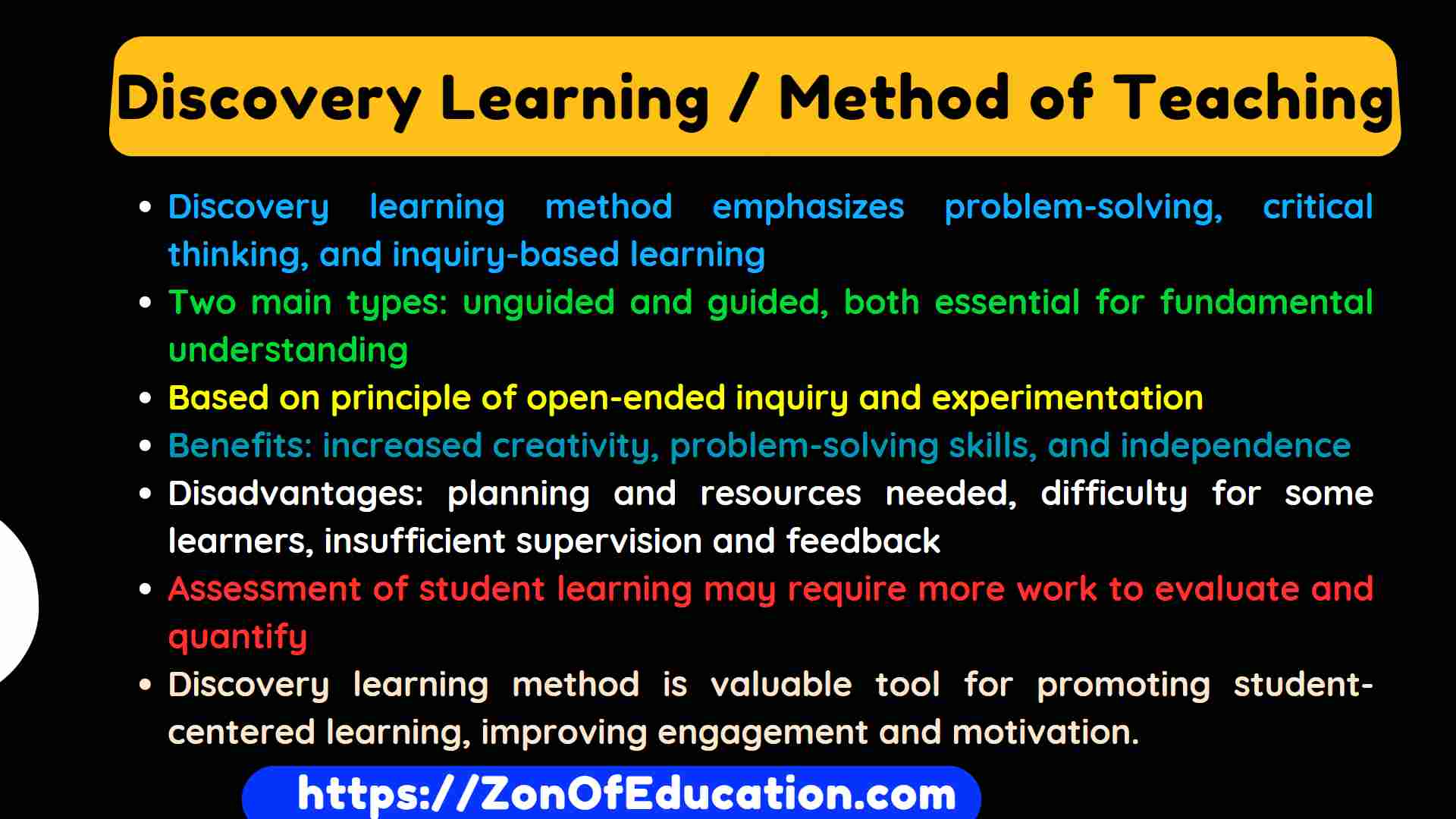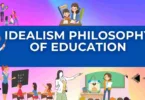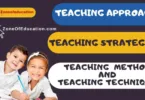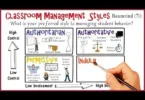The Discovery Learning or The Discovery Method of Teaching
It was introduced by an American Psychologist, Jerome Brunner, in the 1960s, who supported the constructivism paradigm and learning by doing. In his theory, Bruner’s Theory of Development clearly explains how students learn and the impact of the environment on the students learning.
The discovery learning method is a student-centred teaching approach that stresses problem-solving, critical thinking, and inquiry-based learning.
This strategy has the potential to increase student engagement and motivation significantly. In this teaching method, the teachers must offer a supportive learning environment to ensure that all students benefit from this technique.
The discovery method of teaching, also known as discovery learning, is a form of education that places students at the centre of the learning process. Rather than depending on the teacher’s direct teaching, this technique enables students to actively participate in their learning process by investigating topics via inquiry and exploration.
Students can discover new ideas and concepts by problem-solving, questioning, and exploring their surroundings in exploration learning. The discovery teaching style features student-centeredness, critical thinking, problem-solving, exploration, and inquiry-based learning.
Discovery learning focuses on each student’s unique needs and talents, allowing them to explore new ideas and concepts in their distinctive manner. This strategy is ideal for naturally interested and self-motivated children since it helps them build critical thinking and problem-solving skills.
Discovery Method of Teaching (Discovery Learning)
The discovery teaching style has the potential to boost student involvement and motivation. Allowing students to participate actively in their learning makes them more involved in the topic and increases their chances of long-term retention.
Discovery learning may also assist students in developing a better knowledge of issues and ideas by allowing them to explore them more meaningfully.
But still, there are several drawbacks to using the discovery approach of teaching. Some children, for example, may struggle with the open-ended nature of discovery learning and get overwhelmed by the absence of structure.
Moreover, discovery learning takes time and may only sometimes result in the intended learning results. Instructors must balance guided and open-ended exploration learning to ensure that all children benefit from this method.
The discovery method of teaching may be implemented in various ways, depending on the subject matter and the individual requirements of the students. In mathematics, for example, students may be required to tackle a complicated issue by experimenting with several techniques and solutions independently.
Students in science may be encouraged to create their own experiments and observations about the natural world. Whatever the topic, the most important thing is to offer kids a secure and supportive learning environment where they can explore and learn at their speed.
What is the Discovery Method of Teaching?
The discovery teaching technique is a teaching and learning strategy that encourages students to learn via inquiry and experimentation. It is also known as the “investigative learning approach.” By providing students with opportunities to take an active role in their learning, this approach strongly focuses on developing critical thinking and problem-solving abilities.
Students are not simply told material; teachers encourage them to find ideas and principles independently through guided inquiry and investigation.
Types of Discovery Method of Teaching / Learning
There are two main types of discovery learning: unguided and guided discovery learning.
Unguided Discovery Learning
Students in an unguided discovery learning environment are free to autonomously explore and experiment without receiving any direction from the instructor. During guided discovery learning, the instructor offers students approaches and assistance to encourage them to investigate and uncover new ideas autonomously.
Guided Discovery Learning
Guided discovery learning is a more organized method that gives students help and direction as they explore and figure things out independently. This strategy often entails teaching students in their inquiry by asking questions, providing prompts, and providing clues to assist them in making connections between various ideas and concepts.
Steps in Discovery Method of Teaching
The discovery method of instruction consists of three phases to assist pupils in autonomously discovering and investigating various topics. The following items are normally included in these steps:
- Exploration
- Invention
- Discovery
Exploration
Exploration is the first stage of the discovery method of teaching students. Students are allowed to investigate a subject or idea at this stage of the process by engaging in activities such as reading, watching, and participating in experiments, amongst other activities. In addition to laying a foundation of knowledge for the students to build upon in the next parts of the discovery process, this stage aims to foster a sense of natural curiosity and interest in the subject matter the class is studying.
As students are in the discovery phase of the unit, their instructors may utilise a range of materials, such as films, articles, and hands-on activities, to keep their attention and interest.
For instance, in a science lesson, the teacher would invite the students to watch a chemical reaction demonstration and write down their thoughts in a notebook about what they saw. Students taking a literature class may be assigned to read a short tale and then do an analysis of the narrative’s themes and characters.
The exploration phase is essential because it lets students get acquainted with the subject matter and develop a fundamental comprehension of the subject’s main ideas. Also, it helps to build interest and enthusiasm among students, which might drive them to participate in the succeeding parts of the discovery process.
Invention
The invention process is the second phase of the discovery method of teaching. At this stage, you will allow the students to apply their prior knowledge and imagination to develop original thoughts and answers to connect the subject.
This phase is intended to be completed for students to improve their ability to think critically and independently, as well as their problem-solving skills.
During the innovation phase, instructors may give students a provocation or challenge connected to the subject and then ask them to think of their ideas and develop their own answers. Students in a social studies class must devise a strategy for combating poverty in their neighbourhood as an assigned project.
Students in a math class could be invited to create a game that illustrates a mathematical subject via play.
Since it allows students to generate their concepts and approaches to the problem, the innovation phase is an essential part of the process. Students could benefit from this not just in terms of gaining self-assurance and independence but also in terms of developing a more in-depth comprehension of the material.
Discovery
The actual process of discovery learning is the last stage in the discovery method of instruction. At this stage, you will guide students through putting their thoughts and ideas to the test by having them do experiments and conduct analyses.
Students will benefit from this phase by developing a more in-depth grasp of the material and strengthening their ability to solve problems in various contexts.
During the discovery phase, a teacher may give students a task or issue relevant to the subject and then invite students to use materials to solve the problem.
To put a theory to the test, for instance. The students in a science class can be asked to design and carry out their very own experiments. Throughout their history study, students are sometimes tasked with evaluating primary materials and drawing judgments on a particular historical occurrence.
Since it allows students to test their ideas and solutions in the context of the real world, the discovery phase is a crucial part of the process. Both their ability to solve problems and their grasp of the material may improve due to this activity.
It also allows children to take ownership of their work and feel pleasure in their accomplishments, which is a powerful motivator.
5 Principles of Discovery Learning Method
The Discovery Method of Instruction is an effective strategy that centres the educational experience on the student. Educators may assist students in developing critical thinking abilities, self-direction, and resilience by combining the five processes of Problem Solving, Learner Management, Integration and Connection, Information Analysis and Interpretation, and Failure and Feedback. This strategy empowers students to take charge of their own education, resulting in a more engaged and effective learning experience.
You want your students to succeed as teachers, yet conventional teaching approaches sometimes fall short. Here is where the Discovery Teaching Approach comes in. This method places the power in the hands of the students, enabling them to direct their education and enjoy the gratification that comes from self-discovery.
Principal 1: Problem-Solving
Problem-solving is the first phase of the Discovery method of instruction. Students must identify an issue, question, or difficulty and then brainstorm possible solutions or responses in this stage. The emphasis is on the mental process and critical thinking abilities required to arrive at a solution rather than the “correct” or “wrong” answer. Students grow more skilled at problem-solving and are better prepared to manage complicated situations in the future when they are encouraged to think creatively and evaluate some possibilities.
Principal 2: Learner Management
The second phase in the Discovery Way of Teaching is learner management. The significance of student autonomy and self-direction is emphasised at this level. Learners are empowered to take charge of their education by defining objectives and measuring their progress toward those goals. This stage also enables students to acquire time management skills and learn how to prioritize things to meet their objectives.
Principle 3: Integration and Connection
Integration and Connection is the third phase in the Discovery Way of Teaching. Students are encouraged to apply what they learn in other aspects of their lives at this level. This integration and connectivity may take numerous forms, such as using new information in real-world situations or integrating concepts across disciplines. Creating these connections gives students a more comprehensive grasp of the world and how various ideas fit together.
Principle 4: Information Analysis and Interpretation
Information analysis and interpretation are the fourth and final phases. In the classroom, students can explore the topic further and critically assess information sources. Students learn to recognize prejudice, analyse facts, and make sound decisions. This level promotes students becoming more selective information consumers while developing strong analytical and research abilities.
Principle 5: Failure and Feedback
Failure and feedback are the last steps in the discovery method of teaching. This stage highlights the significance of trial and error in learning. Teachers may help students learn from their mistakes and build resilience by allowing them to fail and offering constructive criticism. This phase also teaches pupils to see learning as a journey rather than a goal.
3 Modes of Representation in Jerome Bruner’s Constructivist Theory Of Learning And Cognitive Development
The Discovery Learning Method or Bruner’s 3 Steps of Learning in a Spiral Curriculum
are
- Enactive Mode
- Iconic Mode
- Symbolic Mode
Jerome Bruner’s constructivist theory of learning and cognitive development is an outstanding contribution to education that has transformed how we think about teaching and learning. Bruner felt that learning should be an active process in which students actively develop their own knowledge via interaction with their surroundings. This educational technique empowers and frees pupils by giving them agency and control over their learning.
Bruner’s theory is intensely emotional since it recognizes each learner’s unique experiences and views. It acknowledges that everyone has a unique perspective on the world and that this perspective is continually developing and changing. Bruner thought education should be adapted to each learner’s requirements rather than a one-size-fits-all approach that overlooks the complexities of human intellect and growth.
The constructivist learning and cognitive development paradigm supports critical thinking, problem-solving, and creativity. It understands that education is more than simply gathering information; it is also about applying that information meaningfully. Bruner felt students should be allowed to investigate new ideas and concepts and participate in open-ended inquiry and experimentation.
Bruner’s constructivist approach also highlights the significance of social contact and cooperation in learning. It acknowledges that we learn not just from our own viewpoints and experiences but also from the perspectives and experiences of others. This social component of education is a strong source of emotional engagement and connection because it helps us to meaningfully connect with others and build a better knowledge of ourselves and the world around us. He introduced the tree models for discovery learning, which are explained below.
Enactive Mode In the Discovery Learning (0 to 1 Year)
The discovery learning technique relies on the active mode, which emphasises the value of hands-on experience and active participation in the learning process. It encourages students to learn by doing and to relate their experiences to the taught principles. This learning method is productive and exciting, enabling students to thoroughly immerse themselves in the subject matter and take ownership of their learning.
Learners participate in physical activities that assist them in understanding the topics being taught in the method of discovery learning. This might include creating models, performing experiments, or participating in simulations. By actively engaging in these activities, students may gain personal experience with the ideas and concepts being taught, resulting in a stronger grasp and recall of the information.
Enactive learning is especially effective for those who struggle with typical classroom learning approaches such as lectures and texts. It offers a different method that enables students to actively engage in their education and take charge of their learning. Learners may build a personal connection to the subject by leveraging their experiences and observations, which can help them better absorb and recall the content.
Iconic Mode In the Discovery Learning Method (1 to 6 Years)
For young learners aged 1 to 6 years, the iconic mode is essential to the exploration learning process. It enables individuals to learn via visual representation and investigate their surroundings through their senses. This learning method is interesting and engaging because it allows youngsters to use their ideas and creativity to find new things and relate their experiences to the topics taught.
Children employ visual aids such as drawings, diagrams, and movies to explore and comprehend the world around them in the iconic mode of exploration learning. They may use their senses to study and learn about many items and occurrences, including touch, smell, taste, sight, and sound. They may build a personal connection to the subject matter by engaging these senses, resulting in stronger comprehension and retention of the content.
The iconic mode is especially useful for young learners still working on their language abilities. It enables people to communicate and comprehend topics using visual signals rather than exclusively through spoken communication. This bridges the gap between their present level of language development and the subjects being taught, making it easier for children to learn and create connections.
Symbolic Mode In the Discovery Learning Method (for seven and Above Years)
For older learners to understand complex ideas and develop critical thinking abilities, the symbolic mode of the discovery learning approach is important. It teaches students to create links between abstract concepts and the actual world by representing ideas and theories using symbols and words. This form of learning is fascinating and powerful since it enables students to express themselves and comprehend complicated topics in innovative and relevant ways.
Students utilise symbols like letters, numbers, and mathematical formulae to express ideas and concepts in the symbolic style of discovery learning. They use language to explain and analyse these symbols and relate them to the actual world. Students may better comprehend complicated topics and apply this knowledge to real-world issues and circumstances by employing symbols and words.
The symbolic method is especially valuable for older students because it enables them to practice critical thinking and problem-solving abilities. Students may improve their analytical and problem-solving skills by using symbols and words to express abstract ideas. Students may also enhance their communication abilities by using language to express themselves clearly and effectively.
Discovery Method of Teaching Advantages and Disadvantages
Advantages:
- Encourages Active Learning: Discovery learning enables students to actively participate in the learning process, which increases motivation and interest in the topic.
- Students build critical thinking and problem-solving abilities through solving issues and exploring new ideas, which are vital for their future academic and professional success.
- Customised Learning: By allowing students to explore ideas and answers quickly, personalized learning is promoted, and individual needs and interests are catered to.
- Long-term Retention: Since discovery learning is hands-on, it enhances long-term knowledge retention and improves memory recall.
- Encourages Curiosity: Since students actively research and study new ideas and concepts, the discovery learning technique fosters curiosity and a quest for knowledge.
Disadvantages:
Time-consuming: Compared to other teaching approaches, the discovery learning method may be time-consuming since students may need more time to investigate and discover topics.
Resources required: To perform experiments or investigations, discovery learning necessitates using resources such as equipment, materials, and enough space.
Students may feel overwhelmed or confused when investigating new concepts and ideas if they need to be properly guided and structured.
Possible Misconceptions: Students who explore subjects without good direction may acquire misconceptions or misunderstandings, leading to wrong conclusions and incomplete learning.
Assessment Difficulties: Evaluating student learning and comprehension in discovery learning may be difficult since quantifying a student’s understanding and knowledge level can be difficult.
Advantages:
- Active learning and critical thinking abilities are encouraged.
- Curiosity and drive to study are encouraged.
- Improves idea retention and comprehension.
- Aids in the development of problem-solving abilities.
- It encourages independence and self-directed learning.
- It promotes creativity and inventiveness.
- Encourages the use of knowledge in real-world circumstances.
- Opportunities for cooperation and communication are provided.
- Improves student interest and participation in learning.
- Allows learners to take charge of their learning.
Disadvantages:
- Planning and execution need a large amount of time and resources.
- It may only be appropriate for some learners, particularly those who demand structure and assistance.
- It might be difficult for pupils who do not have previous knowledge or core abilities.
- Sufficient supervision and feedback may result in a partial or accurate grasp of topics.
- Learning outcomes assessment may require more work to evaluate and quantify.
FAQs
What is Discovery Learning?
Discovery Learning is a student-centred teaching and learning strategy that promotes problem-solving, critical thinking, and discovery. Students actively participate in the learning process with this technique, finding topics via inquiry and exploration.
What are the benefits of using the Discovery Learning Method?
The Discovery Learning Method promotes active participation and critical thinking, fosters creativity, improves problem-solving abilities, encourages cooperation and teamwork, and provides a more real and meaningful learning experience.
What are the characteristics of Discovery Learning?
Discovery Learning has a student-centred approach, active involvement in the learning process, problem-solving and critical thinking, exploration and experimentation, and an emphasis on generating real and meaningful learning experiences.
What are the discovery method of teaching examples?
Pure discovery learning, guided discovery learning, and problem-based learning are all examples of discovery learning.
How does the Discovery Learning Method promote active learning?
The Discovery Learning Method encourages active learning by enabling students to take ownership of their education and actively participate in the learning process via inquiry and experimentation.
What are some examples of hands-on learning activities used in discovery learning?
Experiments, simulations, case studies, and problem-based learning activities are some hands-on learning activities utilised in Discovery Learning.
How does the Discovery Learning Method encourage collaboration among students?
The Discovery Learning Method promotes cooperation and group work activities, such as collaborative problem-solving and group presentations, to increase student participation.
How does the Discovery Learning Method promote problem-solving skills?
The Discovery Learning Method encourages students to participate in learning, develop critical thinking abilities, and apply problem-solving techniques to real-world situations and circumstances.
How can teachers evaluate student learning in the Discovery Learning Method?
Instructors may assess student learning using several assessment techniques in the Discovery Learning Method, such as formative assessments, self-assessments, and peer assessments. Teachers may also use rubrics to measure student performance on particular learning goals.
How does the Discovery Learning Method align with educational innovation?
The Discovery Learning Method promotes student-centred learning, active involvement, and real and meaningful learning experiences, which connect with educational innovation. This method of teaching and learning fosters creativity, critical thinking, and problem-solving abilities, all of which are necessary for success in today’s fast-changing world.
Discovery Method of Teaching – ppt
Find the discovery method of teaching – ppt by visiting our Instagram
Discovery Method of Teaching pdf
Find the discovery method of teaching discovery method of teaching pdf u=join our Facebook Group








[…] the promising nature of team teaching as a method that promotes effective […]
[…] emphasizes hands-on learning and active exploration over passive listening or rote memorization. The Realism teaching method encourages students to participate in activities that help them connect their learning to the real […]
[…] learning is a teaching approach that engages students in the learning process by having them think, discuss, and solve problems. It […]
[…] ground rules in the classroom. Teachers can promote responsible behavior and cultivate a positive learning environment by implementing a progressive discipline approach, ensuring the proportionality of consequences, and consistently enforcing them. Establishing values […]
[…] Assessment is an evaluation method used to measure students’ learning outcomes and achievements at the end of a particular course, unit, or instructional period. It is […]
[…] for Learning (AFL) is a teaching approach that focuses on checking for understanding and making adjustments accordingly. This approach […]
[…] these five educational philosophies share some common goals, they significantly differ in their teaching and learning approaches. Essentialism emphasizes the acquisition of essential knowledge and skills; Perennialism emphasizes […]
[…] another emphasizes the collaboration of those involved in the learning process. This collaborative learning approach helps build and strengthen the interdependence between peers. Also, it encourages them to develop a […]
[…] Philosophy and the aims of education are interrelated, and it is essential to understand the connection between them. Philosophy provides the foundation for educational theories, methods, and practices. It shapes the values, beliefs, and attitudes that educators bring to the classroom. The philosophy of education informs the aims of education, which serve as a guide for educational practices. Aims of education define what educators hope to achieve through teaching and learning. Philosophy is the study of fundamental questions about existence, knowledge, values, and reality. It provides a framework for understanding the world around us and our place in it. In the context of education, philosophy is concerned with the study of the nature and purpose of education, the role of the teacher and student, and the methods of teaching and learning. […]
[…] this method to help students better understand the world. An integrated curriculum is a type of teaching approach that unifies various subjects into a logical whole. This method promotes a comprehensive worldview […]
[…] as a process of obtaining information, educators can make informed decisions to tailor their teaching approaches and support individual student […]
[…] knowledge and skill acquisition. It provides educators with crucial information to improve teaching methods and support students’ Learning. By incorporating both formative and summative assessments, educators can ensure a comprehensive […]
[…] As We have learned in Discovery Learning, Classroom organization is vital in effective classroom management as it contributes to a structured and efficient learning environment. Organizing physical space, instructional materials, and resources in a logical and accessible manner helps minimize distractions and maximizes instructional time. Well-organized classrooms also support smooth transitions between activities, facilitate student movement, and promote a sense of order and predictability, which is essential for maintaining a focused and productive learning environment. […]
[…] has proven to be a game-changer in education, revolutionizing how students learn and teachers teach. This innovative online platform combines the power of technology with the expertise of educators, […]
[…] education, pragmatism facilitates an interdisciplinary approach to teaching and learning. This strategy acknowledges that real-world issues frequently necessitate diverse views and areas […]
[…] determining the proper approaches and strategies to reach educational goals most successfully. The teaching techniques should be founded on solid pedagogical concepts and consider students’ lea… styles and abilities. The instructor should be informed about the subject topic and skilful in […]
[…] naturalist education. Montessori education, for example, is a good instance of this because in this method of teaching the child learns even reading and writing through play. Scouting is another activity in which the child is taught […]
[…] research paradigm contrasts with positivism, which takes an objective approach to research by using quantitative methods such as surveys and experiments to test hypotheses. Interpretive research typically includes […]
[…] research is an approach that uses non-quantitative methods to gather data. This type of research is often used in the social sciences to gain deeper insight […]
[…] child learns by active work, either in group activity or individual activity. This is known as the method of learning by doing. The learner has to learn not from the educator’s experience but from his own […]
[…] examining how knowledge is acquired and evaluated, students can learn to approach the material more critically and develop a deeper appreciation for the complexity of knowledge and […]
[…] It provides a framework for understanding the world around us and our place in it. In the context of education, philosophy is concerned with the study of the nature and purpose of education, the role of the teacher and student, and the methods of teaching and learning. […]
[…] Assigning homework is a gateway to lifelong learning, enabling students to reinforce content independently at home. Tasks promote self-directed study and deeper understanding. Students are already familiar with this practice, having been exposed to problem-based learning approaches. […]
[…] instruction is a teaching approach that recognizes and accommodates the diverse learning needs, interests, and abilities of students. Educators tailor their instruction to meet the […]
[…] dualism, avoiding forced dichotomies like postpositivism and constructivism. Empirical approaches are preferred over idealistic or rationalistic methods. Pragmatist researchers emphasize the effectiveness of an inquiry in achieving its purposes, with a […]
[…] that involves far more than simply prescribing rules and enforcing penalties. It is a comprehensive approach that aims to cultivate a positive learning environment, encourage student responsibility, and promote academic success. Effective behavior […]
[…] The benefits of early childhood education are endless, but the most important benefit is that it teaches the child how to learn. It also prepares them for a lifetime of […]
[…] interdisciplinary projects that center around real-world challenges or problems. Unlike traditional teaching methods that prioritize memorization and rote learning, PBL emphasizes inquiry, collaboration, and hands-on experiences, enabling students to apply their […]
[…] the teaching-learning process. It provides theoretical knowledge for a better understanding of the teaching and learning process within the context of all its complexities and […]
[…] what is expected of them and are encouraged to come to class prepared. It promotes a proactive approach to learning, where students take responsibility for gathering the tools and resources they need to fully […]
[…] teachers are responsive to the individual needs and interests of students, adapting their teaching approaches and strategies […]
[…] get evidence detailing the learners’ progress in a given subject. To take this test, the teacher approaches this during the learning process by breaking the subjects into units. Since teachers adapt their teaching methods in their […]
[…] a student-centered approach emphasizing critical thinking and active engagement, with traditional teaching approaches. By examining their underlying principles, instructional strategies, and impact on student […]